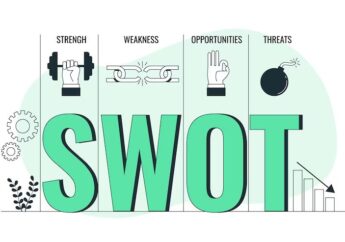The Skills Landscape: Adapting Employee Training to Meet Evolving Business Needs
by Abdul Aziz Mondal Business Development 01 March 2024

Let’s talk about something super important: keeping your team on top of their game in today’s ever-changing business world. Yup, you guessed it – employee training!
Process Of Employee Training

Below is the process through which one can go on with the process of employee training to meet the ever-evolving needs of a business:
Getting the Lay of the Land
Picture this: your business is a ship sailing through the sea of success. But to keep sailing smoothly, you need a crew with the right skills to navigate through storms and conquer new territories. That’s where a capability matrix template comes in handy!
Skill Assessment Shenanigans
- Time to do a little detective work! Take stock of your team’s skills – what they’re good at, what they need help with, and what skills are hot in the market.
- Keep your finger on the pulse of industry trends. What skills are in demand now? What will be the next big thing? Stay ahead of the curve, my friend!
- Don’t forget to chat with your team. They know what they need better than anyone else. Plus, it makes them feel valued – win-win!
Unleash the Capability Matrix
Think of the capability matrix as your skills roadmap. It’s like those treasure maps in pirate movies, but instead of gold, you’re hunting for skills! Break it down into categories like technical skills, soft skills, leadership mojo, and industry-specific know-how. This way, you’ll know exactly what treasures (or skills) your team possesses and what booty (or skills) you need to plunder (or develop).
Crafting Training Magic
Now that you’ve scoped out the terrain, it’s time to roll up your sleeves and get down to business. Here’s how you can tailor your training initiatives to fit your team like a custom-made suit:
Personalized Learning Adventures
- Give your team options – lots of ’em! Online courses, workshops, mentorship programs – let them choose their own adventure.
- Make learning hands-on and fun. Nobody likes a snooze-fest! Throw in some interactive activities, role-plays, or even a team challenge to spice things up.
- Remember, one size does not fit all. Some folks learn better by doing, while others prefer to read or watch videos. Flexibility is key!
Keep The Feedback Flowing
- Feedback is the breakfast of champions, my friend! Schedule regular check-ins with your team to see how they’re doing and where they need extra support.
- Don’t just rely on your gut feeling – data is your friend! Use analytics to track progress and see what’s working (and what’s not).
- And hey, don’t forget to pat your team on the back when they’re crushing it. Positive reinforcement goes a long way!
Embracing Tech Awesomeness
We live in the age of smartphones, AI, and self-driving cars – why not harness the power of tech for your training initiatives? Here are some nifty ideas:
Dive Into Online Learning
The internet is chock-full of awesome learning resources. Platforms like Coursera, Udemy, and LinkedIn Learning offer a smorgasbord of courses on everything from coding to leadership skills.
Mix it up with quizzes, videos, and interactive exercises. Learning should be engaging and fun – not a snooze-fest!
Virtual Reality, Anyone?
Ever dreamed of battling zombies or exploring alien planets? Well, now you can – sort of! VR and AR technology offer immersive learning experiences that make training feel like a game.
Whether it’s practicing public speaking or mastering a new skill, VR and AR can take your training initiatives to the next level.
Measuring Success, Baby!
Last but not least, let’s talk about how to measure the success of your training initiatives. After all, what’s the point of all this hard work if you can’t show off your results?
Track Those KPIs
- Key Performance Indicators (KPIs) are your best friend when it comes to measuring success. Whether it’s skill proficiency levels, completion rates, or employee satisfaction scores, keep an eye on those numbers!
- But remember, it’s not just about the numbers – it’s about the impact. How are your training initiatives making a difference in your team’s performance and the overall success of your business?
Keep The Conversation Going
- Don’t be afraid to ask for feedback. Your team’s input is invaluable when it comes to fine-tuning your training strategies.
- And hey, celebrate those wins! Whether it’s a shout-out in the team meeting or a pizza party (virtual or in-person), let your team know they’re appreciated.
Benefits Of Employee Training To Meet Evolving Needs Of A Business

Now that you know the process, let’s understand the benefits as well. This will help you further understand why organizations should be more invested in employee training.
It Improved Knowledge And Skills
Programs for employee training help improve employees’ skills and knowledge. This helps them match the multiple changes within the industry. These improvements have a positive impact on the productivity of the workers. This will further contribute to the profits and efficiency of the organization. The major things that employees get to learn from training include human relations, work ethics, safety, personal skills, etc.
Satisfies Recommendations Of Performance Appraisals
When the employee performance appraisals of an organization suggest the need for betterment on a specific skill or subject, training programs are organized so that staff members can satisfy that need. Training may, therefore, address a problematic area and work to get to a solution.
It Prepares The Employees To Take Higher Responsibilities
Training programs may also help prepare the employees who plan to move to higher positions and take up more responsibility within the organization. These programs help them learn particular skills that are important for their new positions. For instance, they need to have proper training when it comes to leadership if they are getting promoted to a leadership position.
It Tests How to Effect A New Performance Management System Is
Employee training programs may help organizations test how efficient and effective a new performance management system is. This will further help HR establish a proper expectation of performance. Using these kinds of systems to train the employees will strengthen the necessity to meet goals and help the employees better understand what the organization expects from them.
It Improves Computer And Its Skills
The training program helps the employees learn about necessary IT topics and computer skills. Companies train their employees to make spreadsheets and graphs, edit their databases, and understand the arrangement of networks to offer a more comprehensive idea of computers to improve efficiency in the workplace.
Employee Training Categories

Here are the kind of categories that employee training may be divided into:
Management Training
Employees may undergo multiple levels of management training when they get promoted to senior-level or managerial positions within an organization.
Sales Training
Employees, particularly those in the sales or marketing industries, might need to go through sales training to help sharpen their selling skills and market the company’s products and services.
On The Job Training
When an employee first begins to work at a company, they might get on-the-job training, which will help them learn what is expected of them along with the job skills that are necessary for their newest position.
Mentoring Scheme
Sometimes, particularly in the case of entry-level staff members, employees might have to work under an experienced manager or supervisor to learn more and more about their job and get preliminary experience to work within an organization.
In-Training
Most of the organizations conduct multiple levels of in-house training for the staff members. One option is having experienced members of the organization serve as facilitators, and the other one is to bring an extra trainer in to teach the employees special abilities or skills.
Wrapping It Up
Phew, we covered a lot of ground today! From navigating the skills landscape to crafting training strategies fit for the digital age, you’re now armed with the knowledge and tools to take your team to new heights.
Read More:



































































































